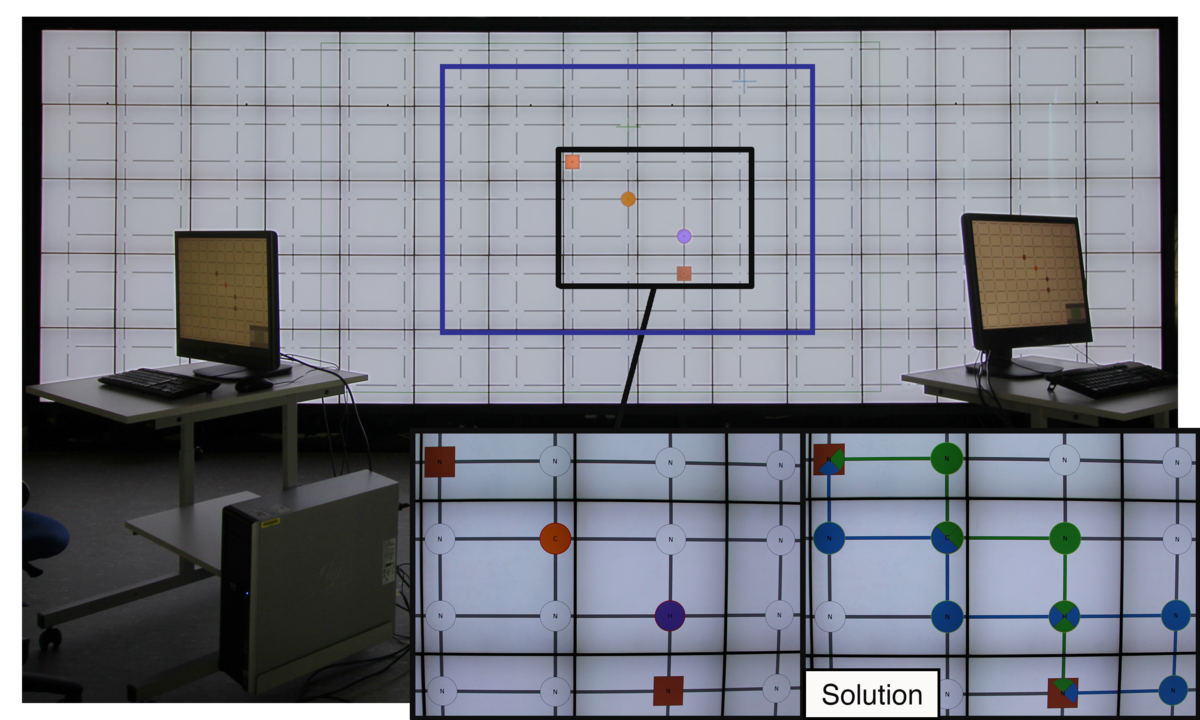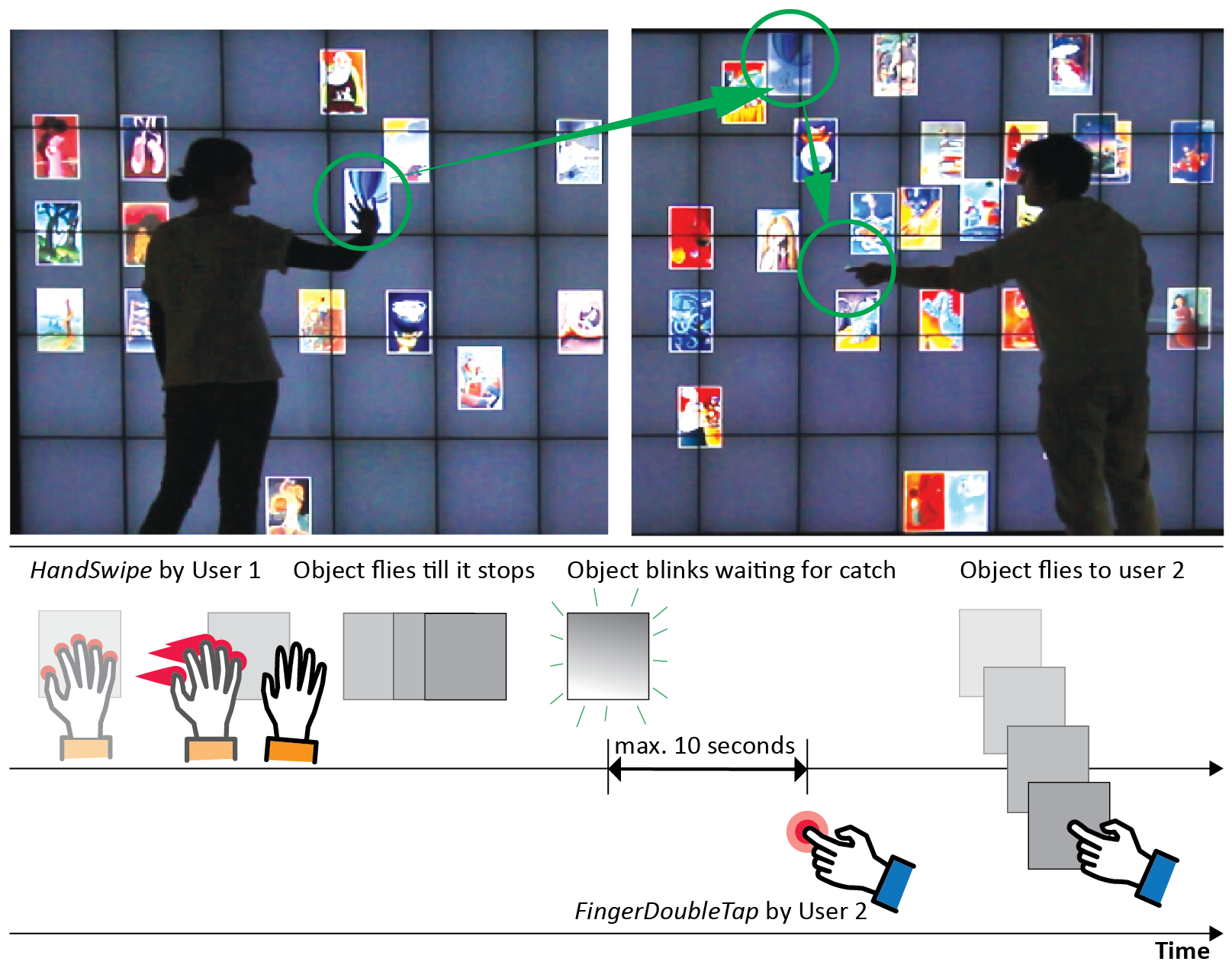Section: New Results
Wall Displays
|
Ultra-high-resolution wall displays feature a very high pixel density over a large physical surface, which makes them well-suited to the collaborative, exploratory visualization of large datasets (see Section 6.3.1). We have continued working on the design, implementation and evaluation of interactive visualization techniques for such ultra-high-resolution wall-sized displays, focusing, in some of these projects, on the collaboration between users who perform different data manipulation and analysis tasks.
-
We first studied if wall displays indeed provide advantages over more classic collaboration setups, such as multiple desktops [24]. Very few studies that empirically assess the differences of collaboration in front of a shared display compared to a non-shared setup, such as multiple desktops with a common view. We compared the use of the wall compared to two desktops, when pairs of users learn to perform a path-planning task (see Figure 5-(Left)). Path planning tasks are common in critical situations (e.g., rerouting resources). We focused on learning, to approach exceptional and unexpected events in critical systems. Our results did not indicate a significant difference in learning time between the two setups, but found that participants adopted different task strategies and that quality was more consistent in the wall setup.
-
We also continued our work on shared interaction techniques (see [56]). Multi-touch wall-sized displays afford collaborative exploration of large datasets and re-organization of digital content. However, standard touch interactions, such as dragging to move content, do not scale well to large surfaces and were not designed to support collaboration, such as passing an object around. With CoReach [22], published at CHI 2017, we introduce a set of collaborative gestures that combine input from multiple users in order to manipulate content, facilitate data exchange and support communication (see Figure 5-(Right) for an example). We conducted an observational study to inform the design of CoReach, and a controlled study showing that it reduced physical fatigue and facilitated collaboration when compared with traditional multi-touch gestures. A final study assessed the value of also allowing input through a handheld tablet to manipulate content from a distance.
-
We also studied more explicitly how interaction techniques affect collaboration. We investigated how pairs explore graphs on a touch enabled wall-display [18], using two selection techniques adapted for collaboration: a basic localized selection, and a propagation selection technique that uses the idea of diffusion/transmission from an origin node. Results from this work were accepted for publication in 2016 (and was part of the previews report), but the work appeared in print this year.




